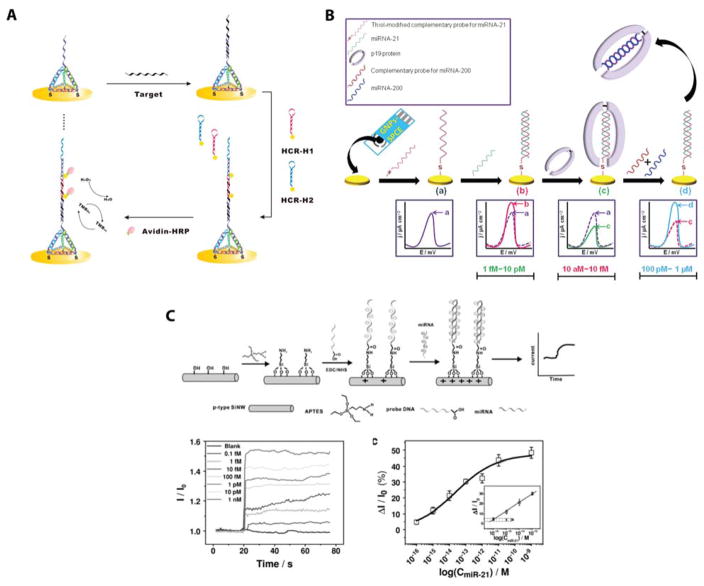Figure 10.
General electrochemical sensing improvements and additional strategies for generating a detectable signal. (A) DNA nanotechnology has been used to improve surface functionalization by ensuring reproducible capture probe orientation at the electrode surface. Reproduced from Ge, Z.; Lin, M.; Wang, P.; Pei, H.; Yan, J.; Shi, J.; Huang, Q.; He, D.; Fan, C.; Zuo, X. Analytical Chemistry 2014, 86, 2124–2130 (ref 142). Copyright 2014 American Chemical Society. (B) Impedance can be used to detect the presence of miRNAs. Here, three different detection regimes (label free detection, protein binding based signal amplification, and protein dissociation based signal amplification) were identified to extend the dynamic range over 10 orders of magnitude. Reproduced from Labib, M.; Khan, N.; Ghobadloo, S. M.; Cheng, J.; Pezacki, J. P.; Berezovski, M. V. Journal of the American Chemical Society 2013, 135, 3027–3038 ref 146). Copyright 2013 American Chemical Society. (C) Based on impedance, field effect transistors are a simple way to achieve multiplexing capabilities with very low limits of detection. Reproduced from CMOS-Compatible Silicon Nanowire Field-Effect Transistors for Ultrasensitive and Label-Free microRNAs sensing, Lu, N.; Gao, A.; Dai, P.; Song, S.; Fan, C.; Wang, Y.; Li, T. Small, Vol. 10, Issue 10, (ref 154). Copyright 2014, Wiley.

